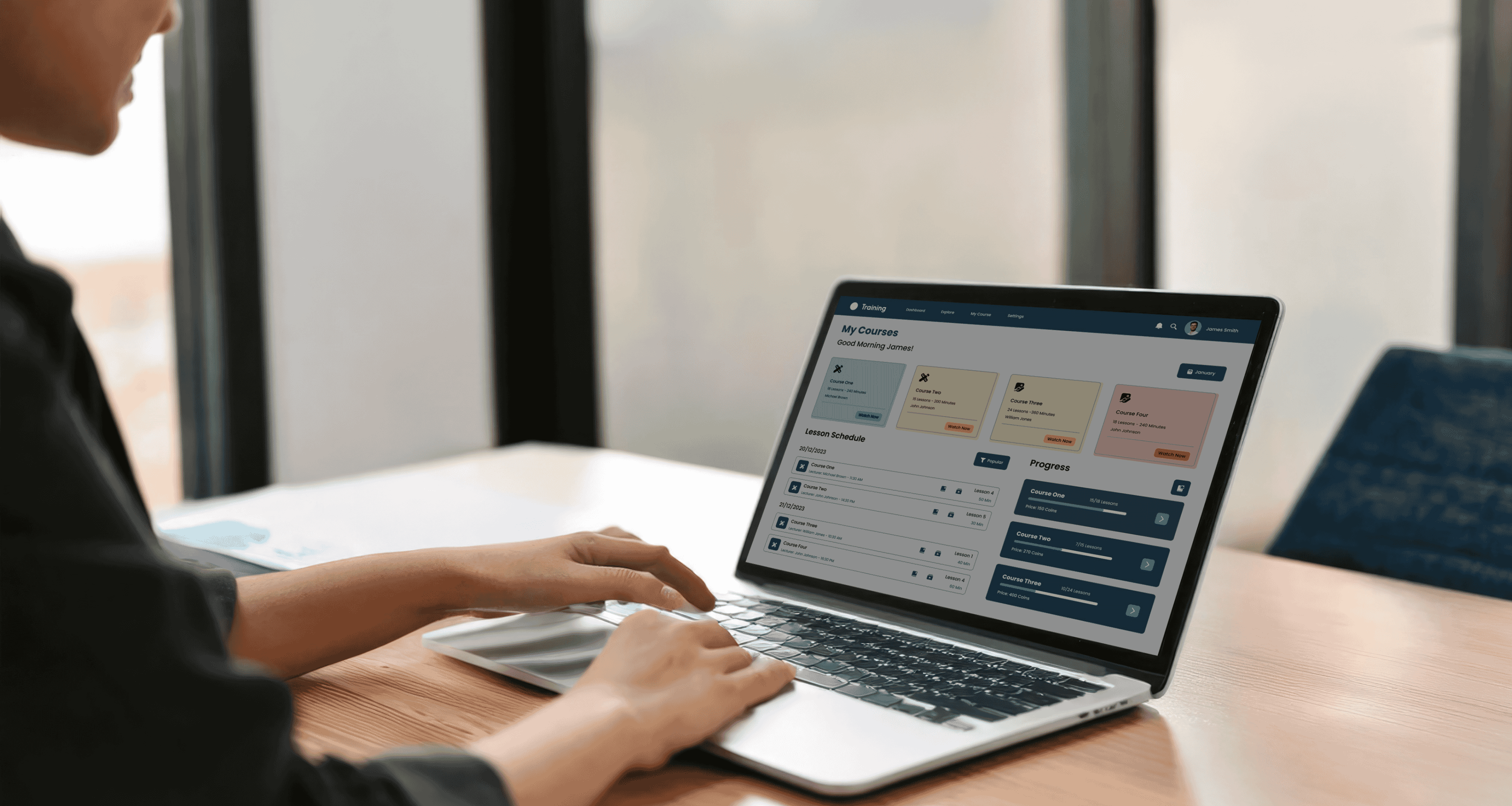With the current pace of change, Learning Content Management Systems (LCMS) have emerged as indispensable tools for organizations committed to keeping employee skills current. These sophisticated platforms facilitate the creation, management, and delivery of educational content, enabling creators across the organization to streamline processes while enhancing learner engagement in each course.
By leveraging an LCMS, organizations can ensure their learning materials remain easily accessible, up-to-date, and precisely tailored to meet the diverse needs of modern learners. This systematic approach to learning content management has become particularly crucial as organizations navigate rapid technological changes and evolving workforce needs.
What is a Learning Content Management System (LCMS)?
Learning content management systems serve as the foundation of effective content development through centralized creation, organization, and distribution of learning content. With In content creation software, they provide intuitive interfaces that empower educators to develop interactive learning materials without requiring the extensive technical expertise of a management tool. Advanced tagging and categorization features help learning content creators organize materials effectively, ensuring learners in every course can easily discover relevant content when exploring skills beyond their current role.
LCMSs also support seamless content distribution across multiple platforms and channels, including Learning Management Systems (LMS), mobile devices, and dynamic web applications. This helps organizations with training meet learners where they're most comfortable and maximize knowledge transfer through an integrated content delivery platform.
The real power of an LCMS lies in its ability to maintain content consistency while enabling rapid updates across all delivery channels. This centralized approach ensures that when information changes, updates can be implemented once and automatically reflected across all instances where that content appears.

Learning Content Management System Use Cases: Who Would Benefit?
LCMSs demonstrate their versatility across various sectors. They have particularly strong applications in corporate learning and development courses, where they efficiently manage employee training through tailored learning paths aligned with business objectives.
NetApp's success with MadCap Software's LCMS offering stands as a compelling example. MadCap Create, the LCMS platform, transformed their unwieldy 500-page course materials into streamlined, modular content that is easily navigated by learners. The story doesn’t end there—NetApp also achieved a 20% reduction in production time without additional headcount. Their shift to centralized, data-driven content management eliminated redundant work while providing actionable insights for continuous program improvement. Both learners and the organization benefit from this increased efficiency.
Higher education institutions also leverage LCMSs to develop sophisticated online courses that cater to diverse student needs while maintaining academic rigor. Additionally, non-profit organizations utilize these systems to create accessible educational resources for community outreach programs, ensuring learning opportunities reach all intended audiences. Manufacturing companies have also found significant value in LCMS implementation, particularly for technical training and standard operating procedures, using these systems to maintain complex documentation that must be updated frequently.
Step-by-Step Guide for Getting Started with an LCMS
1. Identify Learning Needs and Objectives: Conduct a comprehensive internal assessment to understand your target audience, their learning preferences, and how training outcomes align with strategic business goals. During this critical phase, develop clear metrics for success and establish specific learner outcomes that will drive measurable results for your organization.
2. Select the Right LCMS: Evaluate potential platforms based on essential capabilities including interface intuitiveness, omnichannel delivery options, analytics depth, and integration flexibility. LCMSs like MadCap Create demonstrate the comprehensive feature set required for enterprise-grade learning content management, such as extensive integration capabilities for automated workflows, in-depth analytics dashboards, compliance with privacy and PII regulations, multi-format publishing, and much more.
3. Set Up User Roles and Train Your Team: Implement a robust permission structure that clearly defines responsibilities across content creators, course administrators, and learners. Deploy focused training initiatives to ensure your team masters the platform's capabilities and understands how to leverage its features for maximum impact, including utilizing content collaboration software that enhances team cooperation and efficiency.
4. Develop a Content Strategy: Create a systematic plan that outlines content types, target audiences, and delivery milestones. Enable your content creators to build comprehensive outlines and assessment frameworks, establishing a foundation for creating, organizing, and distributing effective learning modules through the LCMS.
5. Launch Your LCMS: Initiate platform adoption by migrating existing learning materials while your team develops new content. This parallel approach ensures proper content formatting while allowing your team to gain practical experience with the system's organization, tagging, and distribution capabilities before full-scale implementation.

LCMS Integrations with Other Platforms
A powerful LCMS becomes even more effective through strategic integration with complementary tools. Integration with LMS platforms enables comprehensive learner progress tracking and real-time content updates. In practice, this may look like organizations building modular onboarding content in their LCMS, encompassing company policies, IT setup, and role-specific training. The LMS integrated with the LCMS then delivers this content to new employees, tracks their progress, and syncs completion data with HR. Policy updates made in the LCMS by HR automatically updates relevant material in the onboarding course, with no manual reuploading required.
Integrations with analytics platforms provide deeper insights into user engagement that can be used to further inform HR and management decisions, while social media integrations facilitate broader content distribution within the workforce and also to relevant third parties such as vendors, contractors, and customers.
Last but not least, enterprise resource planning (ERP) system integrations can further enhance an LCMS's effectiveness by automatically updating and creating online training content based on changes in business processes or procedures, keeping learning content synchronized with actual business operations. This integration can also help team members get the exact training material they need as and when required; for example, when a cross-department employee transfer occurs and this change is registered in the ERP system, the LCMS automatically deploys customized onboarding and product training aligned with the employee’s new role.
Best Practices for Learning and Mastering Your LCMS
Most LCMS platforms provide an easy form of management for extensive documentation, tutorials, and guides to help content creators maximize system utilization. Regular experimentation with features enhances proficiency, while participation in online forums and user communities offers valuable insights from experienced users.
Organizations should also develop style guides and templates that ensure consistency across all learning materials while maintaining flexibility for different learning contexts. Regular content audits help identify outdated materials and opportunities for improvement, which can be worked on seamlessly with the help of the LCMS.
Tips for Updating Your LCMS
Keeping your LCMS updated to current versions is important to ensure your team has access to the best version of features or even new features. Here are some crucial things to do before and after updating your LCMS:
- Back Up Your Data: Implement systematic backup procedures before making any significant system changes. Regular backups protect your valuable content and provide a safety net for system modifications.
- Monitor Performance: Utilize analytics tools to track key metrics and assess how updates impact user engagement and system performance. This data-driven approach helps identify areas for improvement and validate successful changes.
- Test in Staging: Deploy updates in a controlled staging environment first to identify potential issues before they affect your live platform. This precautionary step helps maintain system stability and user experience.
- Maintain Update Logs: Keep detailed records of all system changes and updates. Comprehensive logs serve as a valuable resource for troubleshooting and enable quick problem resolution when needed.

LCMS Future Trends
The LCMS landscape continues evolving through transformative technological advances. AI-powered personalization analyzes individual learner behavior to create customized learning pathways, ensuring content resonates with unique learning styles and preferences. Microlearning also continues to gain prominence as organizations adapt to decreasing attention spans and just-in-time learning needs, breaking traditional courses into focused segments for quick absorption and application.
Machine learning algorithms are increasingly being integrated into LCMSs to automate content tagging, improve search functionality, and predict learner needs based on historical data patterns. Another software trend that’s shaping the future of content delivery is mobile accessibility as professionals increasingly rely on their mobile devices for learning. This trend is pushing LCMS platforms to adapt their interfaces to ensure seamless mobile experiences, making education more accessible and adaptable to modern workforce needs.
Start Your LCMS Journey Today with MadCap Create
Implementing an LCMSs is no longer just an option for organizations committed to effective learning and development—it's a strategic necessity. MadCap Create’s comprehensive LCMS solution offers the robust features, seamless integration capabilities, and scalable architecture needed to transform your learning content strategy. By leveraging MadCap Create’s powerful platform, your organization can streamline content creation, ensure consistency across all channels, and deliver impactful learning experiences that drive real results.
Ready to revolutionize your approach to learning content management? Contact our expert team today to discover how MadCap Create can help you build a more agile, efficient, and effective learning ecosystem.











